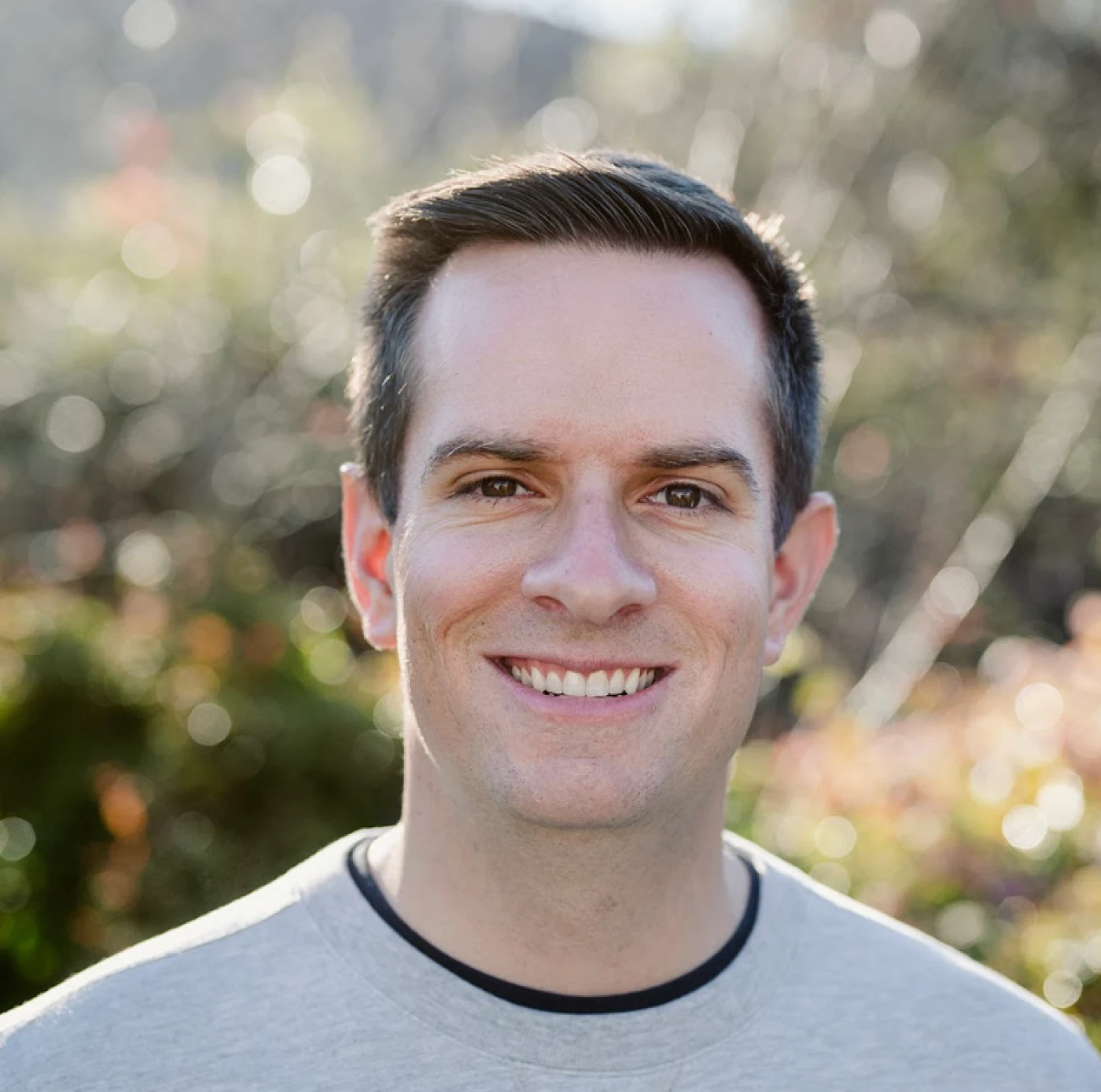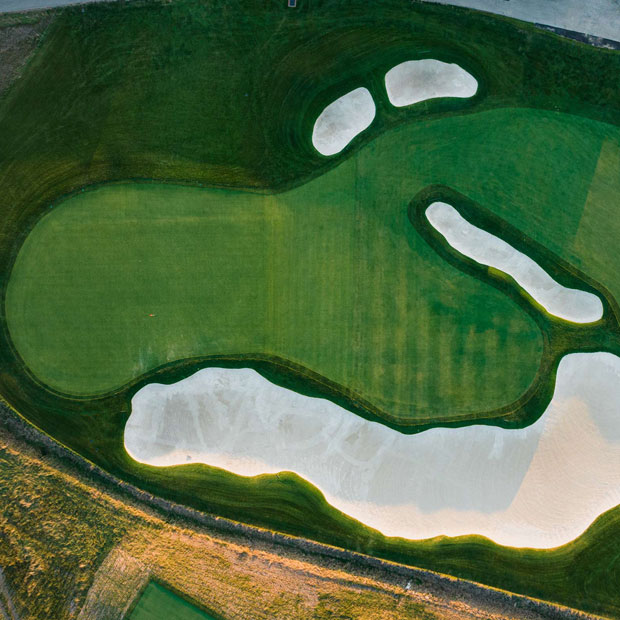Golf, the Environment, and… Beekeeping?
Parker Anderson of Greener Golf discusses his vision for golf’s sustainable future


“Golf is a dirty sport that’s wrecking the environment,” a CNN article claimed. “But it doesn’t have to be.”
Of course, it’s not true that golf is single-handedly wrecking the environment, and the author makes no effort to prove that it is. But there’s a reason the sentence is in the piece. It reflects a commonly held belief—one that the golf industry hasn’t done a great job combating.
As Parker Anderson put it in a recent episode of The Fried Egg Podcast, “The golf industry in general is very bad at describing the value of golf, especially to non-golfers…. Most people experience golf driving by a fenced-off area, and they see irrigation going off but don’t see a single soul. [So they think,] ‘What a waste of land.’”
But Anderson, a former research scientist in the Turfgrass Science Lab at the University of Minnesota, knows there’s a different story to tell about golf’s environmental impact. That’s why he founded Greener Golf, a consulting company that helps golf facilities become more sustainable and improve their relationships with their communities and natural surroundings. He sees a future in which golf courses will be recognized not just as places to play but also as important assets to the environment.
Check out our podcast with Parker below and/or keep reading to find out more about his ideas and initiatives.
Measure twice, cut once
In golf, the first step toward improvement is becoming aware of your shortcomings. Unless you actually find out where you’re losing strokes, you won’t know what to work on. Similarly, in order for the golf industry to do away with the “dirty sport” stigma, golf facilities need to conduct a proper analysis of how they interact with the environment.
“We talk a lot about the future,” Parker Anderson said to The Fried Egg, “but we really don’t know where we stand. [Greener Golf] does a lot of data collection on [each] golf course, looks at how much water it uses—really just a baseline assessment of where it is now. That gets you in a really strong position to make a change and measure that change. And that change results in a positive story about the value of the course.”

Parker Anderson wants golf courses to begin to see themselves as stewards of the environment. Photo credit: Greener Golf
The problem is that many golf courses prefer not to go through this kind of process. Some think they can’t afford it; others are afraid of what they might find. “There is a belief among some in the industry that if you don’t measure it, it doesn’t exist,” Anderson explained. “If you start measuring something, then you are liable for whatever that issue is.”
But the fact is that climate change and environmental sustainability are among the most important issues of the 21st century. So the golf industry would do well not to hide from any hard truths. If courses want to be perceived in a positive light, they first need to figure out what they are doing to and for the environment, and how they can do better.
Defining sustainable golf
Parker Anderson believes golf facilities can be models of sustainability. But what does it mean to be sustainable?
According to the United Nations, sustainability consists of “meeting the needs of the present without compromising the ability of future generations to meet their own needs.” Anderson likes that definition, but he has some additional ways of explaining the concept. “One is the outdoor motto of ‘leave it better than you found it,’” he said. “But the definition and the practice that I really identify with is the First Nations approach of reciprocity. We’re given a great gift to be out in the outdoors, so how can we support these ecosystems?”
So to be sustainable, golf needs to pay back the privilege of using land. That’s simple to say but complicated to do. Anderson considers more than 1,000 different factors in determining the sustainability of golf facilities. Those factors include not only ecological metrics but also the economic conditions of the surrounding community and, perhaps most surprisingly, the golfer experience. “Golfer experience is a big part of sustainability,” Anderson said. “I think creating educational opportunities on the golf courses and really highlighting what a golf course [can be], rather than just a recreational space, is a value.”
Anderson is also quick to point out that sustainability doesn’t mean the same thing at every golf facility. For example, whereas courses in California have to grapple with limited water availability, courses in the Midwest tend to struggle with water quality. Golf courses in those two regions will become sustainable in different ways, and they can offer different kinds of benefits to their ecosystems.

At municipally owned Stone Creek Golf Club in Oregon City, Oregon, wetland preservation has been a priority since the course opened in 2002. Photo credit: Garrett Morrison
Above all, Anderson believes that golf has an incredible amount of untapped ecological potential. “Golf courses now are trying to be ‘more sustainable.’ I think that word ‘more’ needs to go,” he said. “I see a future where we’re beyond sustainable, where we’re generating these ecosystems and supporting these ecosystems rather than these net-zero approaches. We’re at a point where I think golf courses can be regenerative and [go] beyond sustainable land use.”
Some paths forward
Speculating about the future of sustainable golf is all well and good, but nothing will come of it unless courses start taking concrete steps.
Anderson has no shortage of ideas. He focuses on what he calls “stacking functions,” or making certain sections of a course beneficial in more than one way. For instance, a stormwater catchment basin in an out-of-play area will retain water that can, in turn, be used for irrigating not only golf turf but also indigenous plants. “The design is key,” Anderon explained. “How do you design a space so that it perpetuates itself—so you don’t have to spend a lot of time on it, but it also provides all these values.”
One initiative that Anderson is particularly passionate about is beekeeping. So far, he has spearheaded beekeeping programs at two golf courses in California: Goat Hill Park and the Valley Club of Montecito. While Anderson describes himself as “a beekeeper primarily for the benefit of the bees,” he emphasizes the good that bees can do for an ecosystem. “Bees are what’s called an indicator species, meaning that if they are healthy and present in a location, it indicates that that area or ecosystem is healthy,” Anderson said. “It’s a shorthand way to say that if you have healthy bees, your golf course is sustainable.”
Finally, beyond their material services to the environment, bees offer a handy metaphor for the entire pursuit of sustainability. “Bees really operate on this for-the-greater-good model,” Anderson said. “They work tirelessly for the greater good of their colony.”
Leave a comment or start a discussion
Engage in our content with thousands of other Fried Egg Golf Members
Engage in our content with thousands of other Fried Egg Golf Members
Get full access to exclusive benefits from Fried Egg Golf
- Member-only content
- Community discussions forums
- Member-only experiences and early access to events





.webp)





Leave a comment or start a discussion
Lorem ipsum dolor sit amet, consectetur adipiscing elit. Suspendisse varius enim in eros elementum tristique. Duis cursus, mi quis viverra ornare, eros dolor interdum nulla, ut commodo diam libero vitae erat. Aenean faucibus nibh et justo cursus id rutrum lorem imperdiet. Nunc ut sem vitae risus tristique posuere. uis cursus, mi quis viverra ornare, eros dolor interdum nulla, ut commodo diam libero vitae erat. Aenean faucibus nibh et justo cursus id rutrum lorem imperdiet. Nunc ut sem vitae risus tristique posuere.